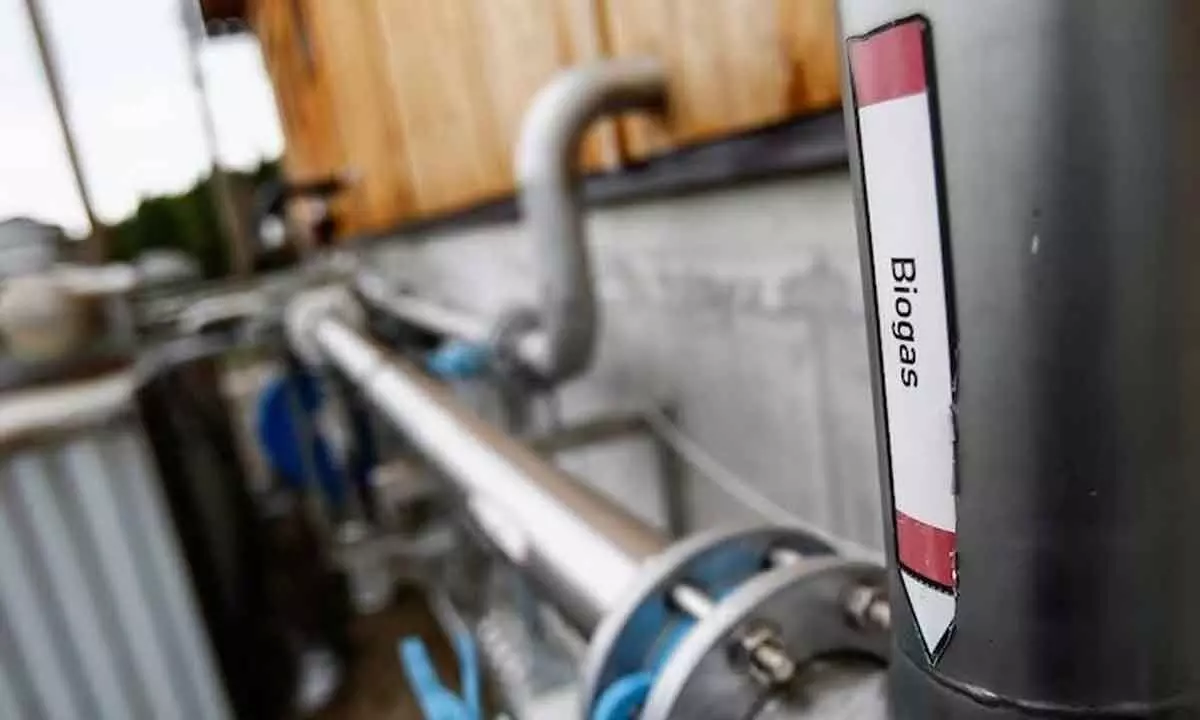Govt must rope in PSUs to ensure FOM off-take
Present production of fermented organic manure (FOM) in the country stands at 1 mn metric tonnes per annum, says Gaurav Kedia, Chairman, IBA
image for illustrative purpose

Promote Use of FOM on Farmlands:
- IFFCO, KRIBHCO, NFL must provide support for co-marketing of FOM
- Normally, FOM is used in a ratio of 1:4 along with other fertilisers
- FOM market can reduce fertiliser imports by at least $1.5 bn
- The by-product of biogas (FOM) is additional revenue stream for producers
- Min Agri through KVKs should promote use of FOM on farmland
New Delhi: Indian Biogas Association (IBA) has suggested that the government should rope in State-owned fertiliser marketing companies to ensure off-take of fermented organic manure to boost the sector.
In an interaction, IBA Chairman Gaurav Kedia said, “Present production of FOM (fermented organic manure) in the country roughly stands at 1 million metric tonnes per annum (MMTA), with an increased potential of up to 7 MMTA with present and upcoming 570 plants, which can serve almost a state like Rajasthan for its fertiliser demand”. He informed that as per our latest data, there are around 97 functional CBG (compressed biogas) plants with an average production of 7.5 TPD (tonne per day) CBG and 30 TPD FOM per plant.
There is estimated production of the FOM of around 1 million tonnes per annum, with a higher potential of up to 7 million tonnes per annum. Presently, he said, there are 570 CBG plants, with 165 plants under construction, which are expected to be completed by this financial year and 405 plants yet to start construction. “To support biogas producers and encourage organic farming, the government should consider roping in Fertilizer Marketing Companies (PSUs) for the off-take and distribution of Fermented Organic Manure (a product of biogas plant),” he said. The Department of Fertilizers must ensure that these companies (like IFFCO, KRIBHCO and NFL) provide adequate support for the co-marketing of FOM alongside chemical fertilisers through their dealer networks and other marketing channels, Kedia suggested.
The ministry should mandate that these companies issue an expression of interest (EOI) for the registration of FOM producers and the off-take from both centralised and decentralised biogas/bio-CNG plants, as per the Fertilizer Control Order (FCO) for solid and liquid FOM, he said. These companies should be linked at the root level to facilitate the application process for corresponding FOM producers within a specific geographical area, he noted. Given that FOM has 2 per cent NPK content and 70 per cent moisture content, the current production of 1 million metric tonnes of FOM can supply 6,000 tonnes of NPK (Nitrogen, Phosphorus, and Potassium) supplements, he explained.
However, it can be noted that normally, FOM is used in a ratio of 1:4 along with other fertilisers (1 FOM and 4 parts fertiliser). Completely and suddenly replacing the present practice may lead to drastic results, he added. As per Fertilizer Management System portal data for the year 2021-22 alone, total fertiliser consumed in the country was 63.6 MMT, with major States being Uttar Pradesh, Maharashtra, Madhya Pradesh, Karnataka, Punjab, Rajasthan and Gujarat. With the fertiliser import bill of $12 billion for 2020-21 poised to go up to $20 billion by 2030, the fermented organic manure market can reduce the fertiliser imports by at least $1.5 billion given the envisaged 5000 plants under SATAT (Sustainable Alternative Towards Affordable Transportation) are realised, he stated. The government has been bullish on the production of green energy and may meet its target before 2030, he said, adding that biogas similarly provides a huge underused opportunity.

